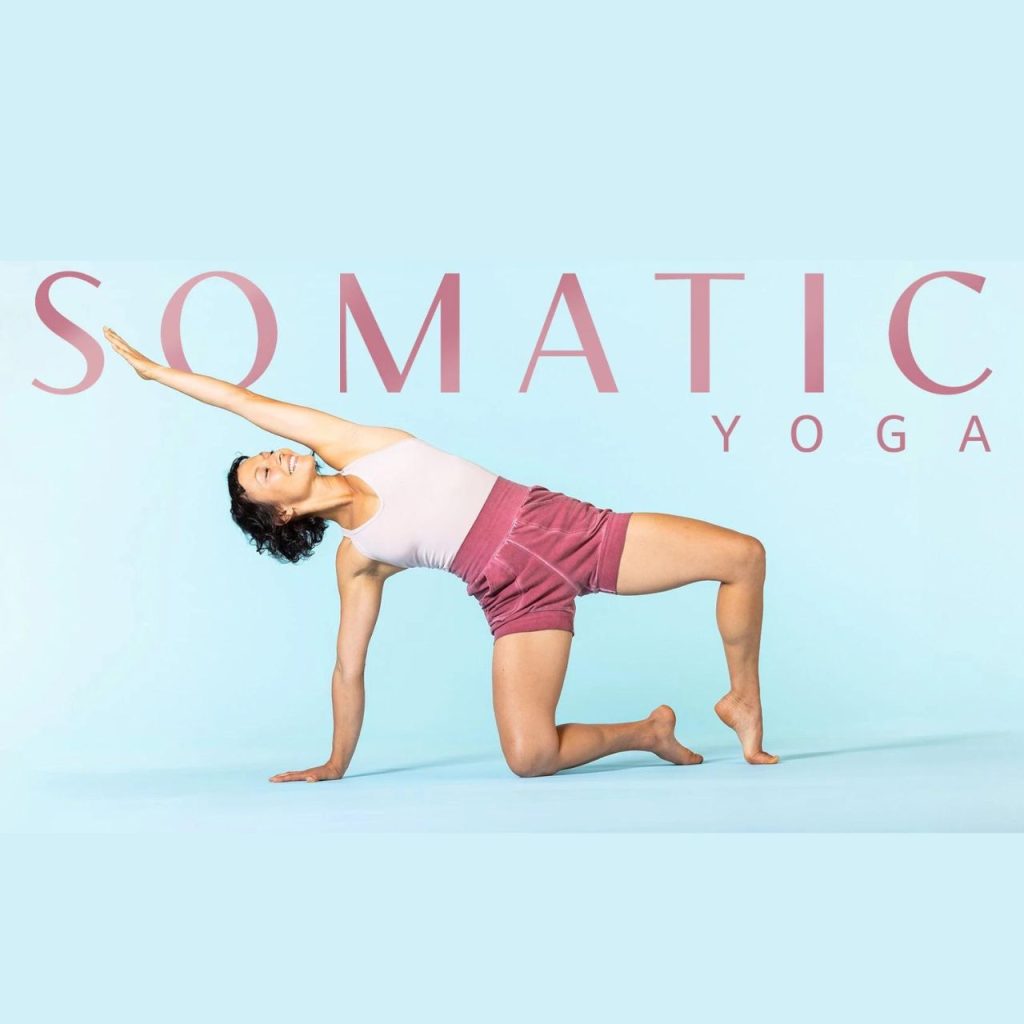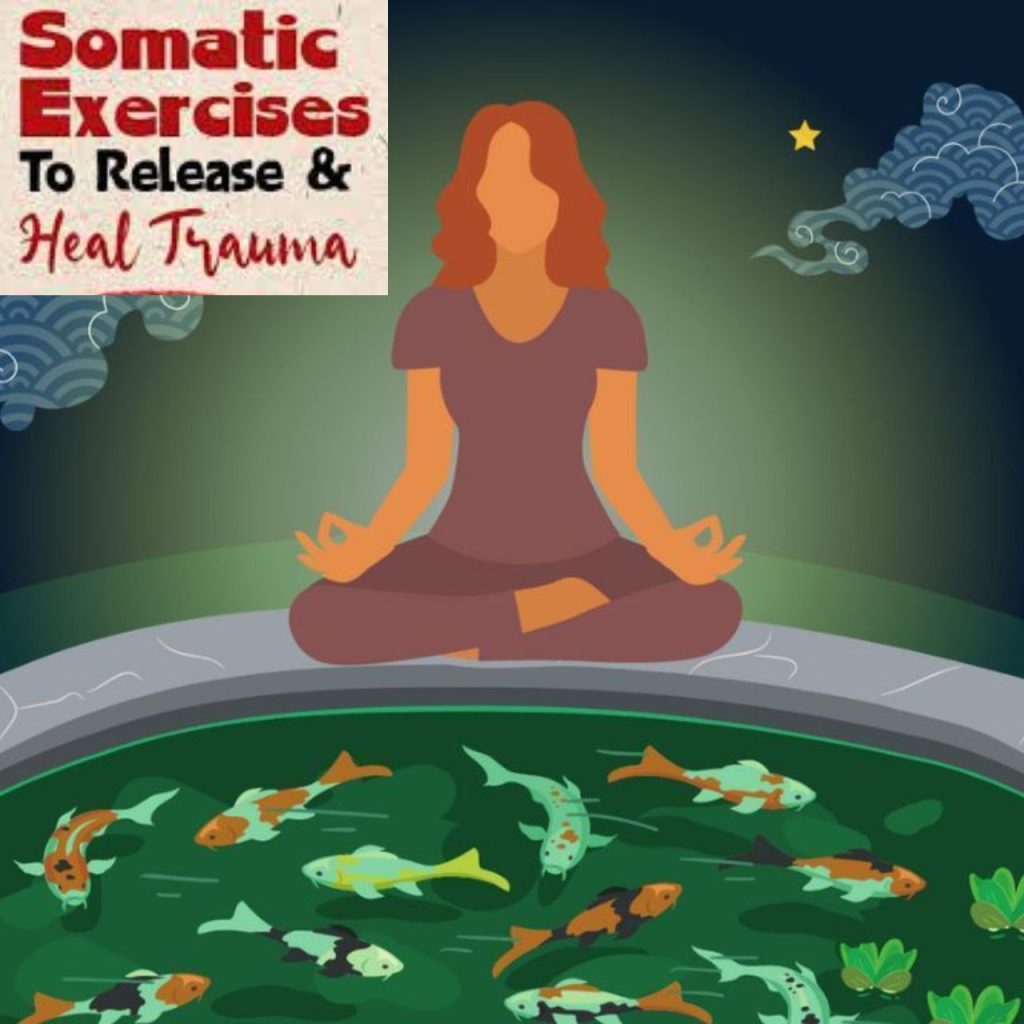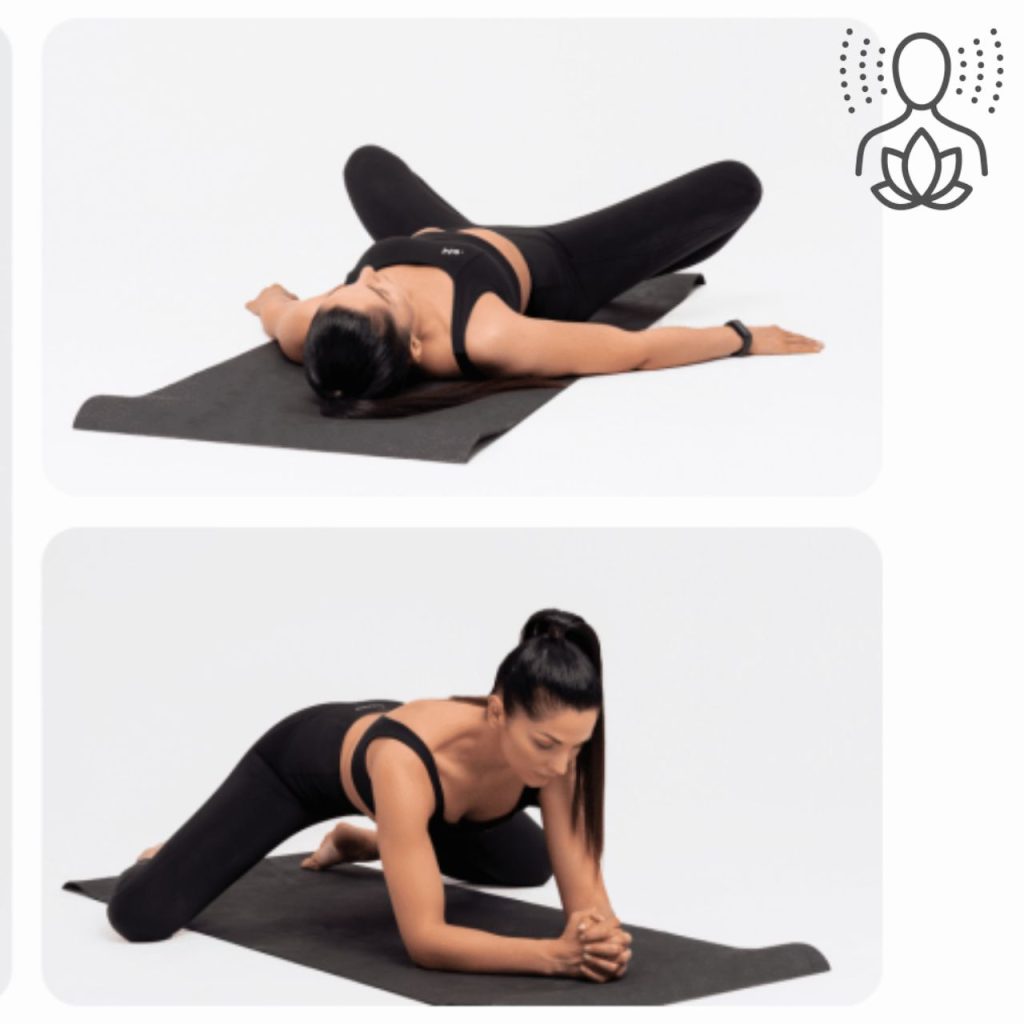Somatic exercises are a therapeutic approach that helps to relieve and heal stress disorders to improve the overall mind–body connection. It is important to comprehend that stress is solely not a product of the mind but has a deep connection with the body as well.
Stress can be caused by various elements and even the normal day-to-day pressures can upset the overall day-to-day functioning. Chronic stress occurs when individuals are unable to meet their demands and suffer from severe psychological breakdown. For somatic exercises also known as somatic therapy the mind-body technique is used to address the physical and psychological symptoms associated with mental health conditions. Moreover, somatic exercises are used to treat traumas for people who are already suffering from anxiety, depression, and other grief issues.
Somatic Exercises for Improved Mind-Body Connection
In the hustle and bustle of earning more money and excelling in life, most individuals don’t pay attention to the internal senses (interception and proprioception) and eventually overlook the interconnectedness of mind and body. Somatic exercises are specially designed to enhance the overall awareness of the mind and body. This is a complete therapy that encourages you to shift from cognition and thoughts and connect to the sensations that are experienced by your body.
By slowing down you will figure out how different parts of the body interact and function and how the emotions impact the physical body. The increased awareness of emotional health and mental health addresses the emotions and sensations stored in certain body parts.
Without further ado, let’s deep dive into the details of the somatic exercises that are designed to improve the mind-body connection. These somatic exercises are simple yet they are important to navigate emotional blockages and to have a harmonious relationship with the body.
Somatic Exercises for Trauma
Many of the patients suffered from traumatic brain injuries that can cause everlasting psychological damage. The somatic exercise approach for trauma recovery uses the bottom-up approach. To regulate the nervous system and come back to a state of calmness try out the following somatic exercises.
Grounding Exercises
Practitioners have devised a useful approach to improve both the mind and body connection via somatic exercises. These simple yet powerful techniques not only assist in calming the nervous system but also serve as a rejuvenating self-care tool.
Picture these exercises as your go-to embodied meditation for reconnecting with your body and hitting the reset button. Here are the techniques you can easily share with patients or incorporate into your routine:
Wave Breathing
Stand still with your hands resting on your thighs. Inhale as you lift your chin and slide your hips back, forming a gentle arch. Pause, then exhale as you bring your head towards your chest and move your tailbone forward. Notice how your spine gracefully follows your breath.
Swaying
To get rid of the tension, firstly embrace the freedom to sway like a reed in the wind. Close your eyes to release this rocking motion to get relaxed and have a sense of release.
Heels Drop
Stand tall and let your eyes relax. Then raise your toes and gently drop back onto your heels. Create a slow rhythmic pattern and try to relax the lower area. Feel free to ease your tension and continue this for at least a minute.
Caring for Yourself to Better Care for Others
Giving priority to self-care is not just a luxury but a necessity nowadays. The emotional intensity of the job puts clinicians at risk of burnout and depression, affecting empathy and patient engagement. What’s the solution to this problem? Try to incorporate these grounding somatic exercises into your routine.
Taking breaks, stretching, swaying, and breathing deeply not only improves your well-being but also enhances your ability to provide top-notch care to your patients. Amidst all the chaos a healthy reminder is that creating a healthy balance of mind and body is your key to serving others effectively
What is somatic yoga?

Somatic yoga produces wonder so we can better interpret the body-mind relationship. As we enter the deep conversation with ourselves and the world we start to learn about ourselves and the world in a better way. Overall somatic yoga therapy is designed to assist in unwinding from unconscious habits, creating new neural pathways, and increasing neuroplasticity.
Somatic Yoga exercises
If you are looking for somatic exercises to relax and chill, yoga is the best fit. There are various somatic yoga poses to practice to release your tension. Most yoga postures incorporate different physical postures and relaxation techniques to improve the overall well-being of an individual. Following are a few examples of somatic yoga poses.
Constructive Rest Pose
Through this, you cannot collectively tackle all the imbalances and habitual compensations you have developed in your body over time. Start by simply releasing the psoas in the posture with the constructive rest position. In all the somatic exercises this requires simple steps to lay a foundation for rebalancing.
Simple lie on your back and bend your knees in the right angle. Place your feet on the floor in line with the hip sockets at least 12-16 inches from the buttocks. Afterwards, rest your hands and forearms on the rib cage on your pelvis and bring them to your floor as Shavasna . In this posture, you shift the awareness to support your bones. At this point take notes of any part of the skeleton where the muscular contraction prevents the body from surrendering to the pull of gravity. With the release of psoas, the distribution of weight will start to increase throughout the body.
Easy Pose Wrist Stretch
At a beginner level Easy pose wrist stretch is a part of warm up of shoulders and wrists. The wrist stretch can be practiced to release the tension at the wrists after the arm balance yoga practice sessions. This wrist stretch is beneficial for students who spend long hours working on their projects with no breaks in between.
Sit in a comfortable position with your legs crossed on a yoga block. Rest your hands on the knees with your palms facing down. Now rotate your wrist outwards and move your hands in the clockwise direction for a few rounds. After the circular position bring your hands in the neutral position. Repeat the stretch on the other side too. Throughout the wrist exercise make sure that you focus on the breathing part. Inhale and exhale slowly and mindfully to release tension.
Cat-cow Stretch
If you want to improve your posture and balance then there is no other good stress reliever than Cat-cow stretch. As you link the physical activity with your brain you will feel more relaxed and tension–free. Being one of the best somatic exercises it improves the circulation in the back discs. Although it’s a basic motion it is equally beneficial in easing back pain and maintaining a healthy spine, especially for those who spend a lot of time in a sitting position.
This Somatic exercise helps to promote flexibility and mobility efficiently. In this exercise, you have to gently stretch the human spine to arch it up towards the ceiling and down to the floor. Just try to keep the neck straight and long by looking down and out. In addition, it is also helpful physical therapy that reduces belly fat.
Somatic Exercises for Weight Loss

Are you tired of trying countless meal plans without getting the desired results? or do you dread going to gym to follow the strict exercise routine? If yes well it’s the right time to introduce you to somatic exercises to try another way for weight loss. Although somatic exercises alone do not lead to weight loss they are important to improve body awareness and reduce the stress that plays an important part in the weight loss journey.
Incorporating Somatic exercises into your workout routine
If you are eager to tune your body during workouts, then incorporating somatic exercises is a great way to do it. Start by focusing on the slow and rhythmic stretch movements and gradually move to the difficult ones. As you become aware of your body and how it moves then you can improve your overall fitness. By practicing somatic exercises you thoroughly comprehend your body’s strength and limitations for athletic performances.
With the increase in body awareness, you gain better control of your muscles. To leverage from these somatic exercises for weight loss allocate a 30-minute period each day to focus on your well-being.’
Somatic Exercises for Mindful Flow

How aware you are of your physical sensations and sense of self within your body? In a world that is filled with distractions and a lot of other challenges, it is quite hard to connect with your physical self. The prolonged period of disconnection results in chronic illness and fatigue. As if your body is screaming out loud “Pay Attention”. Mindfulness is one other way to increase somatic awareness that allows you to create a distinct sense of physical self in the present moment.
These somatic exercises are performed slowly during the transition and sensations between poses. They create an everlasting change in the body but require commitment and regular practice. It also focuses on the internal experience of each movement to ensure peace of mind. So if you are looking for ways to improve the body’s resilience and quality of life try to incorporate somatic exercise in your daily routine. Remember! your body is your greatest asset so try to invest in it wisely by using the power of somatic exercise.
Somatic Breathwork : A way to release anxiety
If you call 911. What does the dispatcher say? Take a deep breath. If you are going for an important business meeting what do you do? If you are super anxious, take a deep breath as you reach the doorknob. We don’t pay heed to the breath in our day-to-day lives but that is something important you need to work on.
This somatic therapy helps us to regulate our breathing and release toxins and stress. It also focuses on the awareness of the throat, diaphragm, and shoulders as you breathe and the belly and chest as you exhale. The advanced research across disciplines showed that how we inhale and exhale has a huge impact on the well-being of individuals. Most importantly the breath can be transformationally healing.
Benefits of Somatic Breathwork
The somatic breathwork is a holistic practice that improves emotional and mental well-being. To regain control of the nervous system by making conscious effort to become aware of aspects of the nervous system such as breathing that is normally regulated unconsciously. The potential benefits of breathwork are the following
- Alkalizing your blood PH
- Anti-inflammatory effect
- Elevating your mood
- Trigger Point Release with Props
This exercise refers to calming the activation of the mind and resting the posture is easy and performed quickly. Moreover, by doing the exercise quickly and easily you can reduce shoulder and neck tension.
Alexander Technique
The Alexander Procedure can likewise help you if you experience the ill effects of redundant strain injury or carpal passage condition. It is equally helpful when you’re feeling spinal pain or a firm neck and shoulders. And also when you become awkward while sitting at your PC for significant hours, the Alexander technique is the one you have to try.
Somatic Exercises for Anger
When we have emotions piled up, we need to find healthy ways to get them released before they result in other problems like fatigue, muscle tension, and more. Anger, a very common emotion does not just happen in the brain. It takes place in the body as well. Somatic exercises are also a way to cope up with anger to better connect with the body parts that might store experiences associated with anger.
The somatic exercises release physical tension and practice mindful awareness. For anger issues you can try out the Voo breath, shaking out tension, progressive muscle tension, and much more.
How do you practice somatic release?
The practice of somatic release involves a series of steps that help you to reconnect with your body and release the stored tension. Here are a few of the guidelines to practice somatic release.
Find a peaceful environment
For somatic exercises, you need a peaceful place where you won’t get disturbed. This could be a room of your choice or any outdoor space where you feel relaxed and safe.
Movement
In your daily routine, try to incorporate mindful movement into your practice. This can be either yoga , stretching, grounding, or other physical activity to keep your body in good shape. Pay close attention to each movement and allow your emotions to arise without judgment.
Rest and Reflect
After the practice sessions, take a few moments to rest and reflect on your experience. For the initial days, you might not notice a sense of relief but gradually you will see change and emotional release.
Regular Practice Sessions
Whether it’s few minutes in the morning or evening try to spare some time to improve your well-being. Somatic exercises are effective when they are done regularly. As somatic release is a personal practice each individual has a unique experience. If you ever feel that some somatic exercises don’t suit you, try to pause the exercise and return to it once you get comfortable.
If the somatic exercises are not working for you try to seek expert guidance from the somatic therapist. With the guidance of health professionals, you can lessen anger, stress, and anxiety issues.
Frequently Asked Questions
What is somatic technique?
The focus on the physical sensations to improve mind-body interconnectedness is known as somatic therapy. The mind–body exercises include breath work, grounding, massaging, yoga, and much more.
Is yoga a form of somatic therapy?
Yes, yoga is a form of somatic exercise because it places great emphasis on internal physical perception and experience. It includes various yoga poses that re-educate the way your brain senses and moves the muscles.
The somatic yoga poses are focused on the experience, skill, and ease of movements and transitions. It is a gentle exercise that is aligned with the somatic principles to release the patterns of pain in the body.
What are the most common 4 somatic practices?
The most common 4 somatic practices include the following
· Rolfing
· Body-mind centering
· Alexander technique
· Feldenkrais method
Is massage a somatic therapy?
Yes, somatic massage therapy is a specialized branch that focuses on areas of pain or trauma in your body. Using the massaging techniques, you can reduce muscle pain and relieve physical and psychological symptoms.















